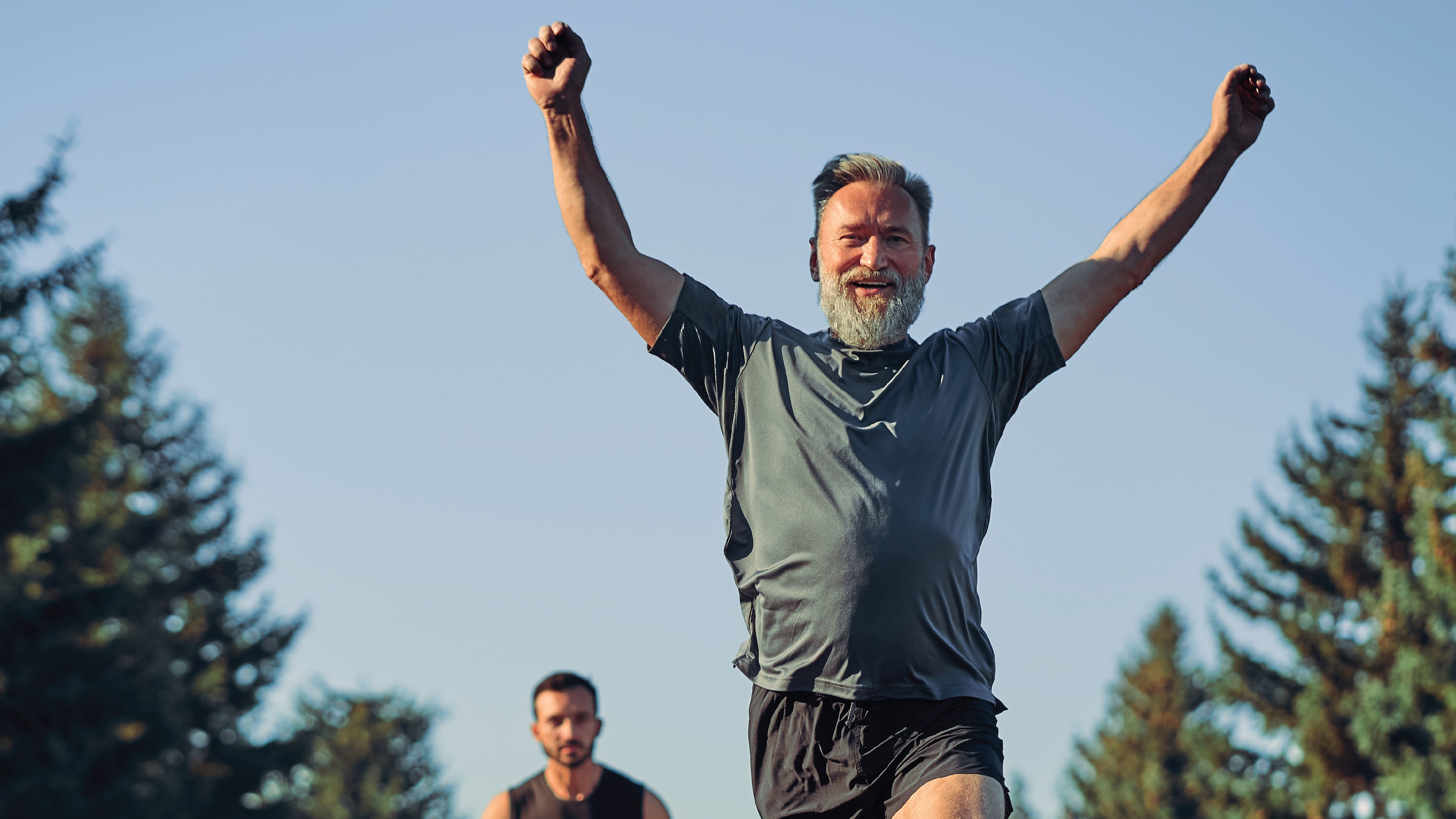Getting older is unavoidable; none of us are immune.
Yet living longer is not as important as living well and thriving. As we age, our body aims to repair and rejuvenate. Unfortunately, the process of recovery is not flawless.
Yet, benefits and performance gains can be achieved for older athletes who challenge the negative stereotypes associated with ageing. Ageing is not a state of decline; instead, it's a state of self-empowerment.
‘I’m here out here, and I can do this,’ says a veteran runner, who shows that our bodies can still perform long after our twenties. Athletes, just like her, reject the notion of ‘bowing out gracefully’ and instead aim to make the most of their lives at every age.
Others who’ve never played sports before are also lacing up. For the first time, late bloomers are taking on an alternative identity as the winner, a sports champion, and a more physically active person - an identity not part of their youth, explain Australian sport and health researchers (Dionigi RA. 2011).
Take the inspiring story of French cyclist Robert Marchand, who set a world record by riding 22.6 km in just one hour at the remarkable age of 105 (Billat et al., 1985). Robert's journey began as a gardener and wine dealer/truck driver, and it wasn't until he retired at 76 that he embraced physical training.
Contrary to common belief, becoming a successful older athlete does not require a lifetime of training. Advantages and new chapters await late bloomers and the master athlete who continues to train and compete beyond their peak years.

Four reasons why older adult athletes compete
Competitive sports used to be seen as the pursuit of the young and energetic. However, in recent decades, significant changes have not only made leisure and competitive sports accessible to older adults but have also become a new conversation about ageing.
While some of society pushes for increased physical activity to resist the biological effects of ageing, researchers uncover a deeper reason why participation in serious leisure sports is rising.
Research shows that athletes who continue to participate in sports, anywhere from 10 to 50 years, demonstrate:
- Perseverance
- Personal and social benefits
- A social world of like-minded individuals
- Identity as a senior athlete
Further, interviews with master athletes (Medic N, 2011) point out four key drivers which keep athletes like you in the game:
- Enjoyment and fun
- Competition and winning
- Maintenance of fitness and health
- Social support and connection
Yet, despite long-standing knowledge of reduced VO2max across the lifespan, with reported declines of approximately 9-10% per decade for both men and women, equivalent to about a 1% decline each year (Heath et al., 1981; Fitzgerald et al., 1997), it's becoming clear that staying active offers other valuable advantages.
Suppose ultimate peak power output and running speeds do belong to younger cohorts. Are there any competitive advantages that come with age?
The answer to this question is open to debate (Fitzgerald et al., 2020), but an athlete's mindset and acquired wisdom may play a role.

Are there competitive advantages for the older athlete?
As we age, our muscles' maximal strength, speed, and power-producing capacity may experience marked declines (Hunter et al., 2016). However, an extensive review of scientific research showed that older individuals experience less fatigue than younger counterparts (Kent-Braun et al., 2009).
Healthy, more senior men and women are quite capable of sustaining their maximum strength across different conditions and muscle groups. Additionally, older adults often can hold a contraction for longer durations than younger adults.
Moreover, contrary to popular belief, heart rate recovery after peak exercise is similar in younger and older individuals, so long as they are trained athletes (Darr et al., 1988).
How mindset factors into fatigue
General fatigue emerges as a combination of peripheral and central fatigue but is better understood as a conscious feeling. While there are many mechanisms by which one becomes fatigued, the idea of limited resources inevitably comes to mind when we reflect on our potential.
Typically, fatigue is present when one observes:
- A reduced force production (weakness).
- A loss of exercise capacity (reduced endurance).
- An increased sense of effort (perception).
- Decreased power (reduced velocity of muscle contraction).
Research shows that the skin lift and consistent neurological stimulation that Spidertech provides helps to mitigate all of the above negative effects of fatigue on athletic performance. The skin lift decreases fluid congestion, improving the clearance of creatine kinase and lactic acid from the fatigued area, helping to restore normal range of motion (Kim et al., 2018). The consistent neurological stimulation improves balance and body position sense when fatigued to help you get you back to your pre-fatigued abilities, improving movement coordination and linked to fall prevention (Hosp et al., 2018). And the combination of skin lift and neurological stimulation helps to restore muscle strength, endurance, and maximum voluntary contraction, and helps decrease pain and muscle soreness (Que et al., 2023).
Researchers have also recently proposed that, in many cases, there may be a mental component to fatigue- a perceptual barrier limiting our true potential (Camparo et al., 2022). Among sports scientists, it is well-known that the force-generating capacity of our muscles persists far beyond our perceived point of exhaustion. There is more juice in the battery.
Changing your perception of when you ‘feel’ exhausted can lead to a competitive advantage. It is a wisdom that comes with age.
Regardless of age, we can reach new heights by altering our mindset, breaking down the fatigue illusion and pushing through.
Mindset and recovery strategies are game-changers
With each passing year, daily physical stress demands significant resilience in our physical well-being over time. This explains why many people quit exercise programs, as sticking to routines that continually stress the body is challenging. This also contributes to the decline in physical activity with age.
However, adopting training strategies and prioritizing recovery can slow the effects of natural biological declines and keep us in the game. The ageing athlete can still gain strength and endurance from a hard workout.
Bulking at every age is possible
More specifically, the recent study reported that the 85+ years were comparable to that of men and women 65–75 years in achieving:
- 2% increase in whole-body lean mass
- ~10% increase in quadriceps cross-sectional area
- ~38% increase in 1RM (repetition max) leg extension strength
- ~8% improvement in physical performance
In essence, so long as you have the mindset and ability to train, you can still achieve gains. After each training session, recovery should be a priority.
No matter the age, intense workouts can lead to pain and inflammation and slow recovery. Kinesiology taping, for example, is one recovery strategy known to help reduce pain and inflammation following intense workouts. Thus allowing you to build up your resilience, physical well-being, and mindset over time.
References
-
Billat V, Dhonneur G, Mille-Hamard L, Le Moyec L, Momken I, Launay T, Koralsztein JP, Besse S: Case Studies in physiology: maximal oxygen consumption and performance in a centenarian cyclist. J Appl Physiol (1985) 2017;122:430–434. https://doi.org/10.1152/japplphysiol.00569.2016
-
Camparo, S., Maymin, P. Z., Park, C., Yoon, S., Zhang, C., Lee, Y., & Langer, E. J. (2022). The fatigue illusion: The physical effects of mindlessness. Humanities and Social Sciences Communications, 9(1), 1-16. https://doi.org/10.1057/s41599-022-01323-0
-
Darr, K. C., Bassett, D. R., Morgan, B. J., & Thomas, D. P. (1988). Effects of age and training status on heart rate recovery after peak exercise. American Journal of Physiology-Heart and Circulatory Physiology. https://doi.org/10.1152/ajpheart.1988.254.2.H340
-
Dionigi, Rylee A. PhD. The Competitive Older Athlete: A Review of Psychosocial and Sociological Issues. Topics in Geriatric Rehabilitation 32(1):p 55-62, January/March 2016. | DOI: 10.1097/TGR.0000000000000091
-
Fitzgerald, M. D., Tanaka, H., Tran, Z. V., & Seals, D. R. (1997). Age-related declines in maximal aerobic capacity in regularly exercising vs. sedentary women: a meta-analysis. Journal of applied physiology, 83(1), 160-165. https://doi.org/10.1152/jappl.1997.83.1.160
-
Fitzgerald, L. F., Ryan, M. M., Bartlett, M. F., Miehm, J. D., & Kent, J. A. (2020). Muscle architecture, voluntary activation, and low-frequency fatigue do not explain the greater fatigue of older compared with young women during high-velocity contractions. PLOS ONE, 15(11), e0234217. https://doi.org/10.1371/journal.pone.0234217
-
Heath, G.W., Hagberg, J.M., Ehsani, A.A., & Holloszy, J.O. (1981). A physiological comparison of young and older endurance athletes. J Appl Physiol Respir Environ Exerc Physiol, 51(3), 634–640. [PubMed]
-
Hosp, S., Csapo, R., Heinrich, D., Hasler, M., and Nachbauer, W. (2018). Does Kinesiology tape counter exercise-related impairments of balance in the elderly? Gait Posture 62, 167–172. doi: 10.1016/j.gaitpost.2018.03.022
-
Hunter, S. K., Pereira, H. M., & Keenan, K. G. (2016). The aging neuromuscular system and motor performance. Journal of applied physiology. https://doi.org/10.1152/japplphysiol.00475.2016
-
Kent-Braun, Jane A.. Skeletal Muscle Fatigue in Old Age: Whose Advantage?. Exercise and Sport Sciences Reviews 37(1):p 3-9, January 2009. | DOI: 10.1097/JES.0b013e318190ea2e
-
Kim J, Kim S, Lee J. Longer application of kinesio taping would be beneficial for exercise-induced muscle damage. J Exerc Rehabil. 2016 Oct 31;12(5):456-462. doi: 10.12965/jer.1632702.351. PMID: 27807525; PMCID: PMC5091062.
-
Marzuca-Nassr, G. N., Alegría-Molina, A., SanMartín-Calísto, Y., Artigas-Arias, M., Huard, N., Sapunar, J., ... & van Loon, L. J. (2023). Muscle Mass and Strength Gains Following Resistance Exercise Training in Older Adults 65–75 Years and Older Adults Above 85 Years. International Journal of Sport Nutrition and Exercise Metabolism, 1(aop), 1-9. https://doi.org/10.1123/ijsnem.2023-0087
-
Medic N: Understanding Masters athletes’ motivation for sport; in Baker J, Horton S, Weir P (eds): The Masters Athlete: Understanding the Role of Sport and Exercise in Optimizing Aging. New York, Routledge, 2010, pp 105–121.
-
Que N (2023), Effect of kinesio taping in combination with vibration treatment on college students’ delayed-onset muscle soreness. Front. Physiol. 14:1058637. doi: 10.3389/fphys.2023.1058637






Share:
Healthy Snacking Ideas for Active Lifestyles